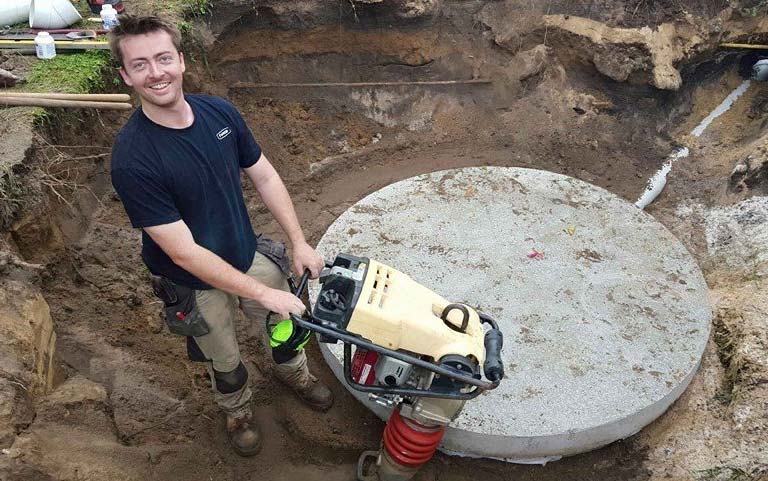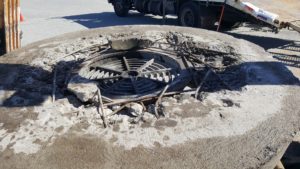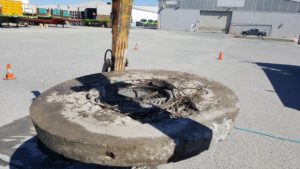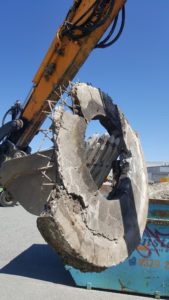Soak Wells
In Perth, the majority of storm water systems are soakwells, the reason behind this is because of the sandy soil most homes are built on, they are perfect for absorbing the storm water run off from your roof’s, car parks and paths. Soakwells themselves are very simple, tanks either made from Concrete, Plastic, Fiberglas or Polyethylene, with open holes in the walls of the tanks that allow the water to soak out into the surrounding ground. The majority of tanks now days are wrapped in a geo-textile fabric to allow water to soak through without sand entering the tank and blocking it, which is a common problem with older tanks.
Some suburbs in and around the hills require storm water to be connected to a street main, as the soil will not effectively soak up the rain during a rainfall event. Usually any suburb on clay soil will require a mains connected storm water installation, round sealed pits are used instead of soak wells, preventing any water from leaching out into the soil, in addition stopping any ground water from entering the storm water system. Sometimes on-site detention may be required, which means a certain percentage of storm water must be kept on site while simultaneously draining into the main system. A shire / Council engineer will give specifications on this, and all that is required is to comply with the requirements – Pictured to the left is a 150mm local council connection, including an orifice plate of 32mm (As Specified by city of Gosnells)
Soakwell Installation Perth:

The first part of designing an effective and compliant storm water system is to first calculate all the roof space of the property, then adding in all the paved / concreted / driveways, then adding in all the grassy area’s. After adding all the area’s together with the correct coefficients, cross referencing this with the Annual Rainfall Intensity calculations and a few other modifiers, such as roof pitch, gradient of the land, different levels etc.
If connected to a mains system, a calculation is required for the storage of storm water on site and provision to keep this while simultaneously draining it into the mains. Of course, a domestic installation requires a lot less work, as most of it is predetermined or at least, has easier inclusive calculations. To access this information you can contact your local shire for information. Alternatively here is a couple of links to local shire requirements. Below is a few links to Soak Wells Perth calculations.
Soakwell Maintenance Perth
From time to time, Soak wells will require maintenance, almost always due to neglect. Common problems include silted up soak wells, where there is too much sand or debris in the well to work correctly. Another common problem is the concrete lids breaking down over time, or just not being heavy duty enough for whats driving over it from day to day. Pictured below are 3 class D soak well lids (designed for trucks) in a trucking yard. As you can see they have been destroyed by heavier equipment driving over them on a daily basis. Heavier type E lids were installed (Usually installed in Docks) to allow container forklifts and heavy equipment to drive over them safety.
Soak wells can also collapse over time, as a lot of older style soak wells were usually hand made and not designed properly. Another common occurrence is to have sink holes open up where the wells have collapsed or undersized for the amount of storm water they receive, causing large holes to open up.
Another fairly common problem is having a new patio or garage installed and not allowing for the extra roof drainage, which can cause problems with soak wells.

Class D well lid broken from heavy traffic

Another Class D lid broken from heavy traffic. You can see the internal reinforcing bars starting to give way from inside the concrete

Another lid about to be dropped in a skip and replaced with class E lids
